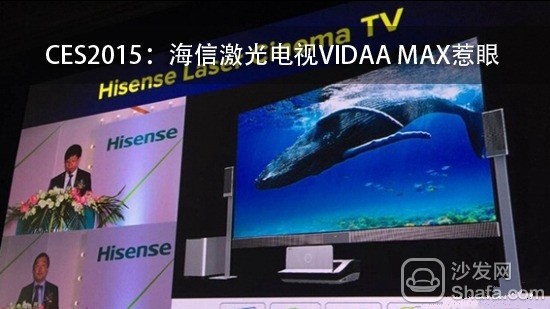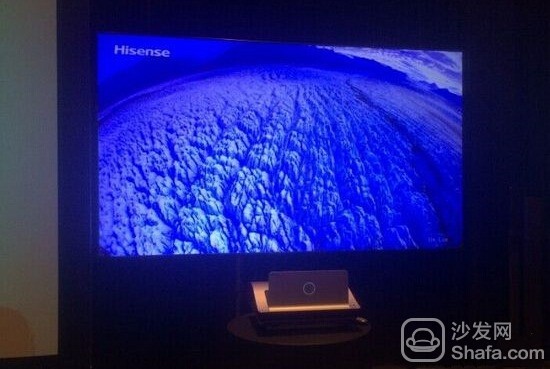Hisense, as a regular customer of CES, brought the laser television of Hisense - VIDAA MAX laser cinema at this year's exhibition. According to reports, Hisense laser TV screen size up to 100 inches, the resolution is 1080p full HD level, light source life of 25,000 hours, built-in Hisense VIDDA intelligent operating system, and has a shutter 3D technology. According to legend, this Hisense laser TV will soon be seen in the domestic market.

Compared with LCD TVs and projectors, Hisense VIDDA MAX laser theater's body is smaller, the main reason is the use of high-quality DMD chips, will greatly reduce the placement space, and power consumption is also lower. Hisense VIDDA MAX laser cinema has the advantages of energy-saving eye protection, space saving, higher color saturation and better viewing effect.

Compared with the projector, Hisense VIDDA MAX laser cinema has obvious advantages in terms of environmental light resistance, installation convenience, space utilization, service life, bulb replacement, image definition and quality, and overall functions. The price of TV is 10 times higher than that of Hisense VIDDA MAX laser cinema, so it has a higher price/performance ratio and is relatively more people-friendly.

Huang Weiping, chief scientist of Hisense Group, focused on why Hisense chose laser TV to participate in the 2015 CES.

First of all, people's pursuit of television is a better picture, a larger display area and a smaller footprint. The evolution from CRT to LCD TV shows this point. However, the traditional TV display technology still encounters bottlenecks in the process of large-scale development. The larger the size of flat-panel TVs, the higher the cost will be, and the price of tens of thousands of yuan will be unbearable to consumers. Laser TVs can easily provide large-size TVs with a size of more than 100 inches at reasonable prices. The future is promising.

What is laser television? LASER TV is a semiconductor-pumped solid-state laser working substance that generates continuous laser light of three wavelengths of red, green, and blue as the light source of a color laser television. The three-primary laser scanning image is controlled by a television signal. The color gamut coverage can theoretically reach more than 90% of the human gamut. This is an improvement over the highest 62% color gamut coverage of LED TVs.